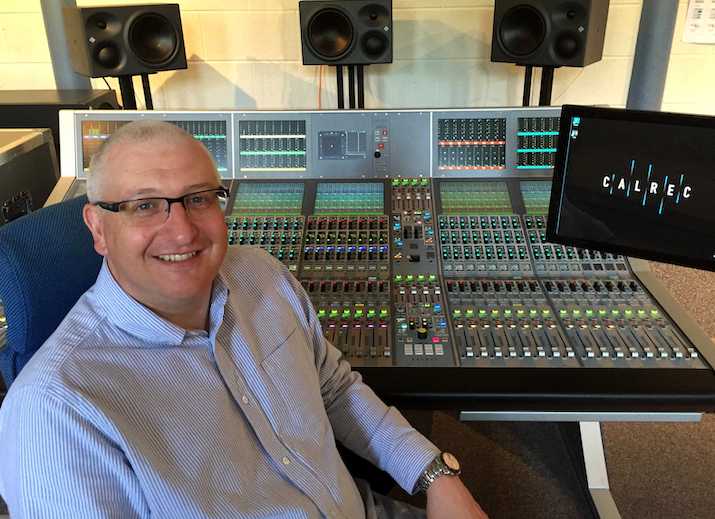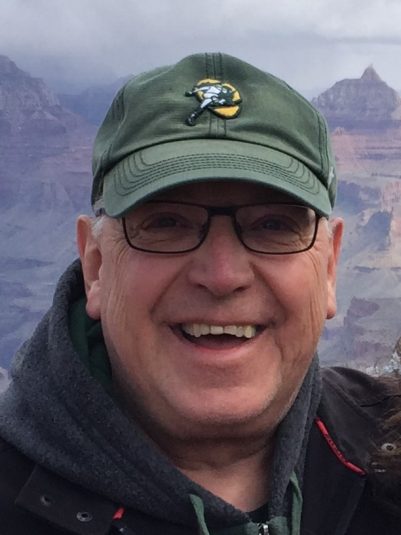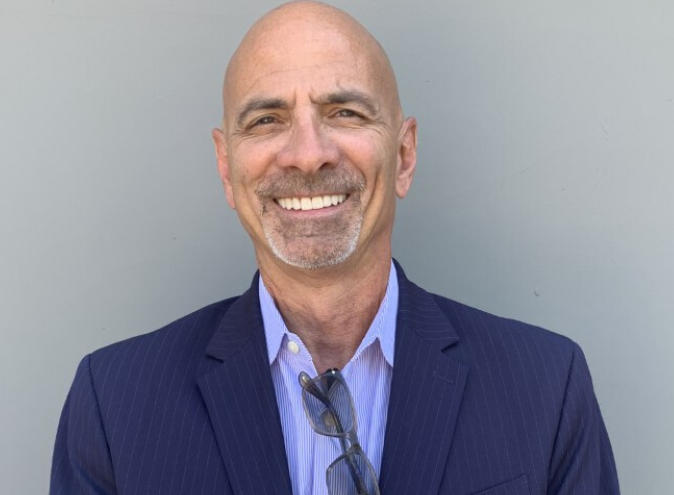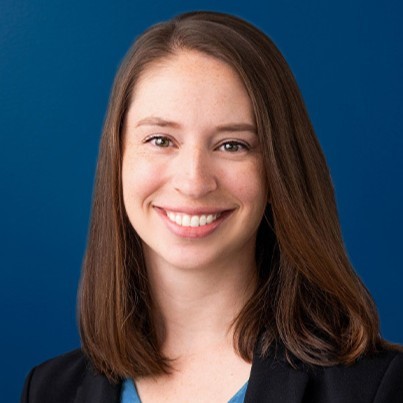Tech Focus: Training, Part 1 — Changes Reflect Complexities of Broadcast-Audio Workflows
Practices are affected by new technologies, a return to in-person, dwindling workforce
Story Highlights
COVID may be largely over, but it has left its mark on broadcast-audio workflow. From the lowliest midweek match to the Olympics, remote control of at least some aspects of broadcast audio has become more norm than exception, and changes in training reflect that.
In fact, the evolution of training for on-air audio embodies the larger changes in television and televised-sports sound, from lessons on Dolby Atmos for immersive audio to building and using an IP network.

Calrec’s Dave Letson: “[Training] has changed in the last several years, going from most people being rather inexperienced with IP to the OB companies like NEP and Game Creek now building their new trucks as IP [environments].”
“A lot has changed in the last several years,” he says, “going from most people being rather inexperienced with IP to the OB companies like NEP and Game Creek now building their new trucks as IP [environments].”
He notes that the knowledge landscape has become more dense and complex in the wake of COVID, which accelerated an ongoing migration toward more remote-production workflows. A1s simply need to know more about more things, he contends, making comprehensive training even more critical.
Back to In-Person

Shure’s Dave Klein: “When events moved from live to streaming, so did the way we taught the technology and techniques. Now we’re moving back to live events and teaching in person again.”
Although online training remains popular and a way to reach people beyond a few key locations, live training is resurgent, say some training specialists. Dave Klein, director, Shure Audio Institute, now part of Shure’s Technical Publications and Technical Content teams, notes that in-person training, focused on topics like frequency-spectrum management and live mixing, has increased significantly in the past six to eight months. Shure’s Master Class events have gone wider in that time, including in New York, the UK, and, more recently, Latin America. He believes that the return of trade-show attendance has been a force in getting people once again comfortable about travel and being with crowds.
“When events moved from live to streaming, so did the way we taught the technology and techniques,” he says, referring to such content as the Shure Webinar: Workflow — Inside the NBA “Bubble” and Shure Webinar: Workflow — Broadcast From Home, developed specifically for broadcast sports during the COVID era. “Now we’re moving back to live events and teaching in person again.”
Integrated Approach
Crew provider Program Productions Inc. (PPI) has been taking an integrated approach to training, trying to ameliorate the persistent labor shortage in broadcast production, which has seen a 30% decrease in its workforce since COVID, while also expanding training. According to PPI Associate Director, People, Kelly Hammonds, the company has encouraged cross-training of clients’ existing employees, such as adding audio or video capabilities to a utility person’s skill set and thus adding an A2 or V2 to the roster; in other instances, an A2 could be “uptrained” to become an A1, or a studio A1 could achieve additional specific skills applicable to a truck environment for remote-production work.
The training itself is done most often by one of PPI’s verified freelancers already working onsite or by an A1 or V1 that PPI sends to a location to work a game or an event, adding a “bump” to their regular compensation. This allows training to take place in a local, hands-on environment and enables trainees to have their follow-up questions answered quickly. Clients, which include RSNs like Bally Sports, encourage and largely fund the effort.
“Keeping the training local,” Hammonds points, “will keep down the long-term travel costs, which have become astronomical. If we can’t find someone local to do the training, we’ll send someone else out at the regular day-rate to do the training, but, when we can, we prefer to establish a training locally.”
Impact on Trends
Interestingly, the shift to IP and a more complex technical broadcast-audio universe in general comes as the industry’s workforce continues to contract. Shure’s Klein estimates that between 2020 and 2021, fully half the A1s and others critical to broadcast and installed audio — across the NAB and Infocomm cohorts, which impact sports on the air and in the venue, respectively — who were considering retiring actually did so, a number that increased to 55% last year.
“It has left a lot of job openings in the entire audio-video industry, including in broadcast,” he says.
At the same time, the UK’s A1 base has become more freelance-oriented, with production increasingly outsourced to third-party providers, notes Calrec’s Letson, and is thus more like the U.S. labor model, which has always been heavily reliant on independent freelance A1s. With a large percentage of A1s aging out, the availability of alternative training options — from apprenticeships to online self-guided learning, educational modalities that Millennials and Gen-Zers are familiar and comfortable with — is even more important.
“The aging-out of our industry is a global problem,” says Letson.
Cloudy Future

Sonority Group’s Chris Davie: “The hard part is getting the students to see the opportunities on the broadcast side.”
Training for trades like broadcast audio is undergoing a metamorphosis. Nationwide, undergraduate college enrollment dropped 8% from 2019 to 2022, 15% percent over the past decade, and it doesn’t seem to be rebounding this year, chiefly because of the increasing cost of higher education and the declining requirements for four-year diplomas in a labor-strained economy. Although specific data aren’t available for schools that specialize in professional-media studies, it does suggest that similar technical programs at state and private colleges may also be experiencing enrollment challenges.
Chris Davie, managing partner, Sonority Group, a media-education consultancy, says that, despite seeing increased enrollments in music-production programs at colleges and universities, a longstanding paradox remains in place: “The hard part is getting the students to see the opportunities on the broadcast side.”
Internships could provide some hope. In the past decade, the number of apprentices has increased by more than 50%, according to federal data and Robert Lerman, a labor economist at the Urban Institute and co-founder of Apprenticeships for America. Companies employ — or at least take on — about 800,000 apprentices, paid or unpaid, versus an estimated 15 million undergraduate students.
But the rise in apprenticeships is running up against a tide of tech-sector layoffs that began last year and is already spilling over to media categories. In November, Warner Bros. Discovery Sports laid off about 70 staffers. In March, Disney cut 7,000 jobs worth $5.5 billion, and reports say its ESPN subsidiary is bracing for layoffs in the coming weeks.
Post-COVID turmoil continues to cloud the future. It could put even more emphasis on manufacturer-sponsored audio-technology training efforts, which can at least justify their associated costs as part of product- and brand-marketing budgets.

Group One Ltd’s Chris Fichera: “We recently did a panel in front about 40 students at Full Sail. They were stunned when they heard what an A1 can earn.”
Chris Fichera, VP, Group One Ltd, the U.S. distributor of Calrec and other broadcast-audio consoles, contends that training and recruitment to replenish the broadcast industry’s diminishing ranks need to go hand in hand. To that end, he’s advocating a manufacturer-led initiative that would put the various technical roles — A1, V1, replay and graphics operators — in front of students at schools, featuring workers who currently perform those tasks on sports broadcasts and emphasizing the jobs’ earnings potential.
“We recently did a panel in front about 40 students at [Orlando-area media academy] Full Sail,” he says. “They were totally taken with the idea of doing this as a career. They were stunned when they heard what an A1 can earn. Doing more of that can make a real difference.”
Click here for Tech Focus: Training, Part 2 — Manufacturers’ Online Audio Learning.

